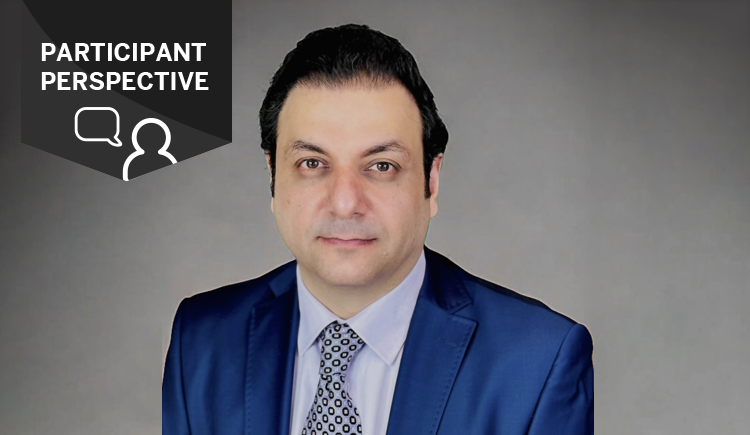
Do any of these situations sound familiar?
- You desperately need additional personnel for your clinic but hear that there is a hiring freeze, as funds are not currently available in the budget for recruitment.
- Your request for a medical device that is necessary for a new procedure is placed behind several others in the queue for planned capital equipment purchasing. After asking for updates, it appears that the wait will be indefinite.
- You have an excellent idea for a quality improvement initiative that will improve clinical outcomes, patient experience, and clinician satisfaction. However, you cannot seem to obtain the necessary organizational resources to support your proposal.
Physicians involved in day-to-day patient care often come across opportunities to improve the health delivery system. However, funds may not be available to support their ideas. This situation can lead to frustration and discouragement. Worse still, we lose out on the advantages that these innovations would bring to our patients.
The problem is that most health care organizations operate on very narrow margins. With limited disposable resources to put toward various initiatives, prioritization and resource allocation become mainstays. Without institutional support (e.g., personnel, space, equipment, time, money, etc.), even the greatest idea will either fail to launch entirely or will lack sustainability.
Fortunately, the cumulative experience of others who have successfully navigated this hurdle can provide tips for dealing with scarcity within our organizations. The following are five principles (i.e., 5Ps) that have proven to be beneficial in gaining institutional support for change initiatives.
1. Priority
“Buy-in is critical to making any large organizational change effort happen. Unless you win support for your ideas, from people at all levels of your organization, big ideas never seem to take hold or have the impact you want.” — John Kotter
Align your initiative with broader organizational strategic priorities to be first in line to receive resources. This helps to advance your project by sharing in resources already mobilized for more substantial institutional efforts. If your project aligns with the needs of the organization, helps the organization to meet its goals, or alleviates a recognized burden, it will rise to the top of the pack.
For example, an organization may be focusing on population health management, and would, therefore, more readily support a proposal for a new community outreach program aimed at preventive health. If the organization is on a campaign to improve patient experience, then a project that improves access or timeliness of care is more likely to be seen favorably and receive resources.
As a leader of change, you need to convey how your idea will enhance operational performance and enable the institution to fulfill its mission. You may need to spend time educating executive leadership about why your proposal should be on their radar. You will also need to communicate the value of your initiative in a way that speaks to various stakeholder interests (e.g., CFOs tend to focus on costs; CEOs tend to focus on growth).
Now, this is not to say that your change initiatives should blindly follow or pander to the strategic goals of the organization. However, it is prudent to frame the problem you’re trying to solve into the ‘bigger picture’ beyond your silo. Do this well, and you are more likely to be successful in gaining support.
2. Pragmatic
“A problem well-stated is a problem half-solved.” — Charles Kettering
Understand that the decision-makers who control vital resources are constantly approached by others to support projects and address issues throughout the organization. They must select which projects to move forward and which to sideline. When requesting support for your change initiative, present a plan that includes anticipated barriers and potential solutions; this will place your project ahead of others. Show that you have already explored all other options—including optimizing existing internal resources—and why your proposal is the best possible solution.
Even if there is disagreement over your potential solutions, the fact that you took the time to do your research will be noticed. Recognizing the practical issues related to implementing your project demonstrates that you’re someone who has good management skills and foresight, making you and your proposal a safer bet to receive otherwise limited resources.
When attempting to secure significant capital investments for your proposal, terms such as ‘return on investment’ and ‘contribution margin’ are important to understand. If you can, try to gather information or speak with someone who can inform you about service contracts, total cost of ownership and cost-effectiveness analysis.
You don’t need to be an expert on revenue cycle or supply chain management but make it clear to the hospital executives that you have thought about things like market share, potential funding sources, and sustainability. Incorporating this information places you a step higher on the ladder compared to many others who are seeking a handout without doing the background research to assess feasibility.
3. Proof of Concept:
“Seeing is believing…” — Thomas Fuller
The ‘proof-of-concept’ approach is an extension of the pragmatic strategy used to convince the powers-that-be that they should support your initiative. A proof of concept can take the form of a small-scale pilot or beta-test to demonstrate that your idea is feasible and can produce the promised results.
The benefit of a pilot is that it often requires fewer resources and can sometimes be conducted without any formal institutional support. Even though small in scope, the pilot project helps others to see the potential of your idea tangibly. It also demonstrates the type of commitment and passion that helps to inspire others to invest the time, resources, and energy to support and scale your initiative.
4. Politics
“…the innovator has for enemies all those who have done well under the old conditions, and lukewarm defenders in those who may do well under the new." ― Niccolò Machiavelli, The Prince
Like it or not, every organization has politics. When you are asking for something, it may mean that someone else loses something. Leaders who wish to obtain the support needed to effect change must learn how to navigate power dynamics successfully. Perform a ‘stakeholder analysis’ and find opportunities to work with peers and senior leadership instead of against or around them.
Anticipate who will be the detractors and people resisting your proposal. Take the time to thoroughly consider your organization’s political landscape, including power bases, potential conflicts, competing interests, and strategic partners. Also, recognize the value of critics. They are providing feedback that you may be able to use to strengthen your campaign.
Forming strategic alliances and creating opportunities for negotiation can be extremely helpful. Build coalitions and enlist the support of peers. Don’t hesitate to ask others for help and advice. Remember to broaden your initiative beyond what is only in your best interest. Show how your request will bring about benefits to other departments/units throughout the organization. Doing so helps to demonstrate the higher ‘return on investment’ of your proposal.
5. Persistence
“Most great people have attained their greatest success just one step beyond their greatest failure.” — Napoleon Hill
You may follow all of the suggestions above and still receive a “no.” But just because you get refused the first time you request resources doesn’t mean that you will always get refused. Keep it on their radar. Find out what the limitations are and continue the conversation.
Remember that some of the best ideas initially were rejected (e.g., germ theory, newborn incubators, sticky notes, the radio, the telephone, home computers, and even some award-winning television series).
Timing is important. An organization’s strategic focus may change from year to year, so stay in contact with senior leaders about upcoming institutional initiatives. Suggest readdressing your issue at some other time when things are more suitable.
If you are serious about the change initiative, you should be willing to go to bat more than once. If nothing else, staying in the game keeps the door open, and the situation may shift in your favor in the future.
Conclusion
Using the 5 P’s to obtain organizational support from senior leadership helps physicians negotiate for their needs, advocate for the needs of their patients, and secure the necessary resources to lead change effectively—of note, the same approach is equally effective in gaining peer support.
This process also helps you to determine if your proposal is well thought out and truly worthy of prioritization (i.e., high-level organizational impact, feasible implementation). Ultimately, this framework will help support, encourage, and empower physicians as well as all leaders of change to transform health care for the better.


